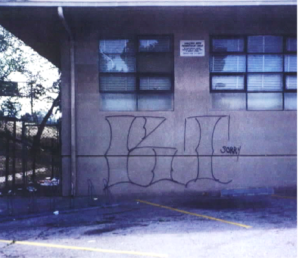What Gangs Can Teach Us
By Anthony Bernier | February 2023
Back in them bad ol’ 1990s, when we were being taught to fear anyone who “looked like” a “gangster,” I worked at an “inner city” library. We were learning the language of “zero-tolerance,”gang injunctions and enhancements, immediate suspensions, and criminalizing something we used to call “ditching school” but now were taught to refer to it as “criminal truancy.”
The library was an example of the city’s separate-but-equal “inner-city” civic infrastructure – code for low-income immigrant and minority neighborhoods. The dilapidated building sat precariously at end of a cul-de-sac, butted-up to the side of a freeway embankment, at the dark end of a freeway underpass. It was so hidden that the police couldn’t find it! On Friday nights, the “Big Top” gang discovered that the parking lot was a great party spot. It was. Secluded from the street, the freeway screaming just feet away, they could play their music loud and not bother anyone. I wish we had a place like that when I was young…
The partying was one thing. But staff would arrive on Saturday mornings to busted beer
bottles everywhere and the side of the building, pathetic as it was, covered in graffiti.
The library’s administrative impulse here, almost by policy, and certainly reaction, was to call the police – even if they couldn’t find the building.
Then would come the lights and sirens, helicopters, and kids getting busted (if not
worse).
I honestly don’t know where it came from, but a different idea dawned on me. It just
seemed like a reasonable thing to at try.
I got this big piece of scrap cardboard, and wrote this [verbatim]…
Come on, you guys.
The little kids come in on Saturday. Do you want
them to think of Echo Park like this?
I taped the sign to the front door.
The next morning, staff came back into my office and says, “you gotta see this.” We
walk out to the front of the building and saw new tagging.
But rather than the usual stuff, this one simply said, in huge letters, “Big Top, sorry.”
And they never tagged the library again.
The point of the story is obvious.
Objectifying young people, like objectifying anyone, rarely brings about positive
outcomes. This is the lesson we never read or hear about in popular media.
Administrations treat kids like someone who sees every problem as a nail because all
they have is a hammer.
All we did here was ask.

